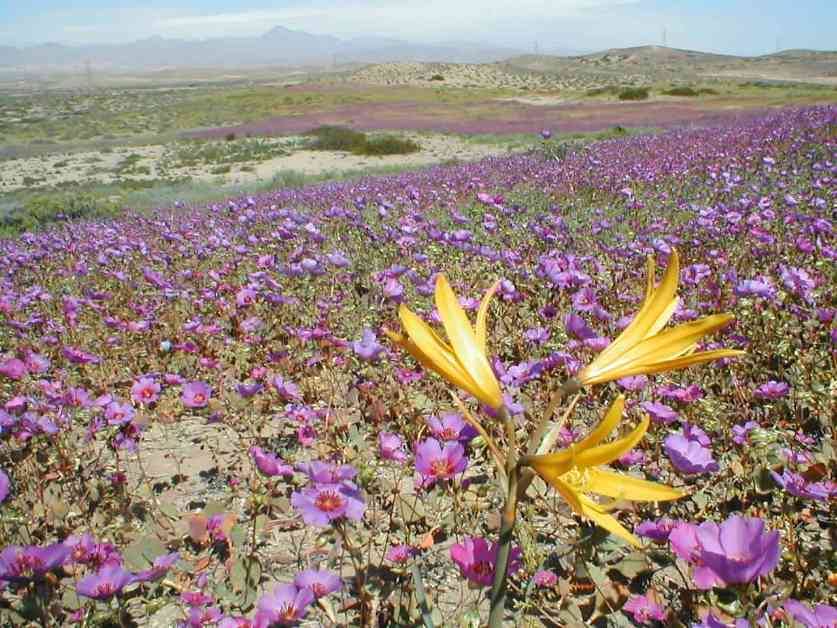In the Atacama Desert, one of the harshest environments on Earth, a remarkable blooming event is currently taking place. Known as a “desert bloom,” this phenomenon is bringing vibrant flowers to certain areas of the desert.
Stretching along the northern coast of Chile, the Atacama Desert covers more than 40,000 square miles of arid land. While Antarctica technically holds the title of the driest desert in the world, the Atacama is known for its extreme dryness. Some weather stations in the region have never even recorded rainfall.
Despite these challenging conditions, the Atacama Desert is home to a surprising variety of plant species that have adapted to survive long periods of drought. These plants remain dormant until the right conditions arise, allowing them to bloom all at once in a spectacular display that can span thousands of square kilometers.
This desert bloom, also known as “Desierto Florido,” is triggered by rare rainfall events that cause dormant seeds in the soil to germinate. These seeds are incredibly resilient, capable of enduring extreme heat and prolonged dry spells.
Cesar Pizarro, the head of biodiversity conservation at the National Forestry Corporation, mentioned that a rainfall of 11-12 millimeters in April set off this current bloom. While the flowering currently covers only a few hundred square kilometers and is not yet considered a full desert bloom, it is unusual for this event to occur in winter, as it typically happens in the spring.
The exact cause of this early bloom is uncertain, with factors like climate change and El Niño potentially playing a role. El Niño, a natural climate phenomenon that affects global weather patterns, can lead to increased rainfall in typically dry regions like the Atacama Desert, creating the ideal conditions for a desert bloom.
During a desert bloom, a variety of native flowers bloom, each uniquely adapted to the harsh desert environment. Some common species include the pink and purple Malvilla, the yellow Añañuca, and the white Lion’s Paw. The current bloom seems to be favoring the “pata de guanaco,” a purple flower that thrives in sandy areas with minimal water.
A desert bloom can showcase up to 200 different species at its peak, highlighting the resilience of life in this unforgiving environment. This event serves as a testament to the adaptability and endurance of plant life in the Atacama Desert, transforming the arid landscape into a colorful spectacle of nature’s beauty.




